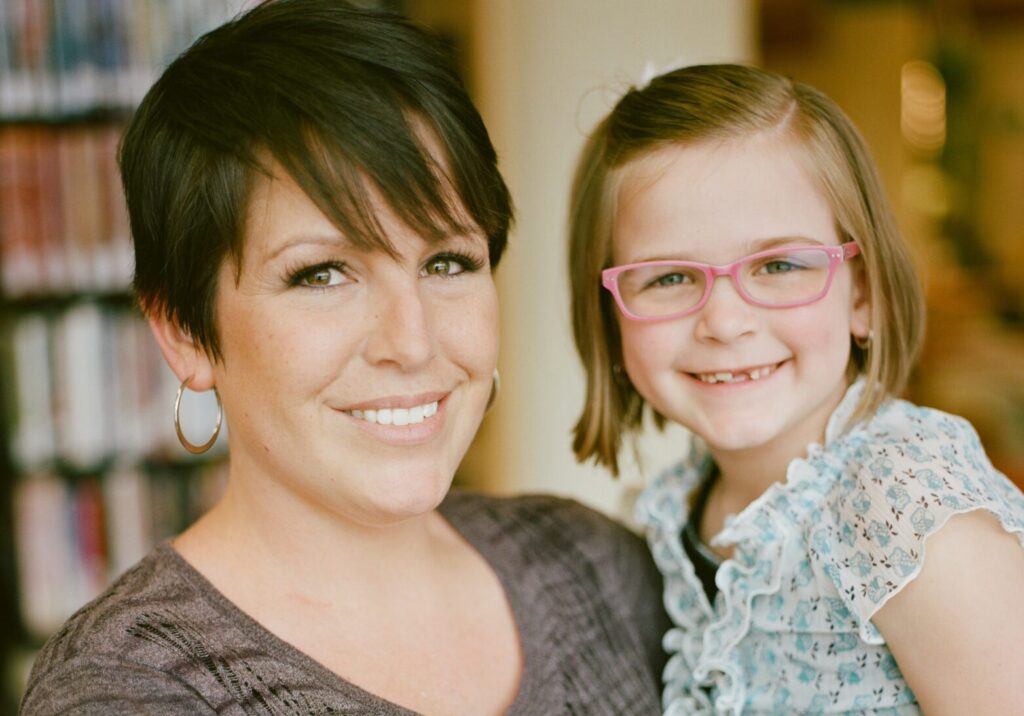Pediatric Eye Exams in Edmonton
As a parent, you may wonder whether your preschooler has a vision problem or when a first eye exam should be scheduled.
Eye exams for children are extremely important. Experts say 5 to 10% of preschoolers and 25% of school-aged children have vision problems. Early identification of a child’s vision problem is crucial because, if left untreated, some childhood vision problems can cause permanent vision loss.
When should kids have their eyes examined?
According to the Alberta Optometry Association (AOA), infants should have their first comprehensive eye exam at 6 months of age. We recommend that children should receive additional eye exams yearly.
Children who need eyeglasses or contact lenses should be examined annually or according to their eye doctor’s recommendations. Because of the importance of good vision for learning, some states require an eye exam for all children entering school for the first time.
Early eye exams also are important because children need the following basic visual skills for learning:
- Near vision
- Distance vision
- Convergence Insufficiency
- Eye teaming (binocularity) skills
- Eye movement skills
- Focusing skills
- Peripheral awareness
- Eye/hand coordination

Scheduling Your Child’s Eye Exam.
Your family doctor or pediatrician likely will be the first medical professional to examine your child’s eyes, however, even if your pediatrician has checked your child’s eyes we still recommend routine exams starting at 6 months of age. Eye doctors have specific equipment and training to help them detect and diagnose potential vision problems and are able to ensure your child’s vision development is on track. .
When scheduling an eye exam, choose a time when your child is usually alert and happy. Specifics of how eye exams are conducted depend on your child’s age, but an exam generally will involve a case history, vision testing, determination of whether eyeglasses are needed, testing of eye alignment, eye tracking and focusing skills, an eye health examination and a consultation with you regarding the findings.
After you’ve made the appointment, you may be sent a case history form by email, or you may be given one when you check in at the doctor’s office. The case history form will ask about your child’s birth history (also called perinatal history), such as birth weight and whether or not the child was full-term. Your eye doctor also may ask whether complications occurred during the pregnancy or delivery. The form will also inquire about your child’s medical history, including current medications and past or present allergies.
Be sure to tell your eye doctor if your child has a history of prematurity, has delayed motor development, engages in frequent eye rubbing, blinks excessively, fails to maintain eye contact, cannot seem to maintain a gaze (fixation) while looking at objects, has poor eye tracking skills or has failed a pediatrician or pre-school vision screening.
Your eye doctor will also want to know about previous ocular diagnosis and treatments involving your child, such as possible surgeries and glasses or contact lens wear. Be sure you inform your eye doctor if there is a family history of eye problems requiring vision correction, such as nearsightedness or farsightedness, misaligned eyes (strabismus) or amblyopia (“lazy eye”).
Eye testing for infants
It takes some time for a baby’s vision skills to develop. To assess whether your infant’s eyes are developing normally, your eye doctor may use one or more of the following tests:
Tests of pupil responses evaluate whether the eye’s pupil opens and closes properly in the presence or absence of light. “Fixate and follow” testing determines whether your baby can fixate on an object (such as a light) and follow it as it moves. Infants should be able to perform this task quite well by the time they are 3 months old. Preferential looking involves using cards that are blank on one side with stripes on the other side to attract the gaze of an infant to the stripes. In this way, vision capabilities can be assessed.
Eye testing for preschool children
Pre-school children can have their eyes thoroughly tested even if they don’t yet know the alphabet or are too young or too shy to answer the doctor’s questions. Some common eye tests used specifically for young children include:
LEA Symbols for young children are similar to regular eye tests using charts with letters, except that special symbols in these tests include an apple, house, square and circle.
Retinoscopy is a test that involves shining a light into the eye to observing how it reflects from the retina (the light-sensitive inner lining of the back of the eye). This test helps eye doctors determine the child’s eyeglass prescription.
Random Dot Stereopsis uses dot patterns to determine how well the two eyes work as a team.
Eye and vision problems that affect children
Besides looking for nearsightedness, farsightedness and astigmatism (refractive errors), your eye doctor will be examining your child’s eyes for signs of these eye and vision problems commonly found in young children:
- Amblyopia (Lazy Eye)
- Strabismus (Misalignment of the eyes)
- Convergence Insufficiency
- Focusing problems
- Eye teaming problems (binocularity)
- Vision and learning.
